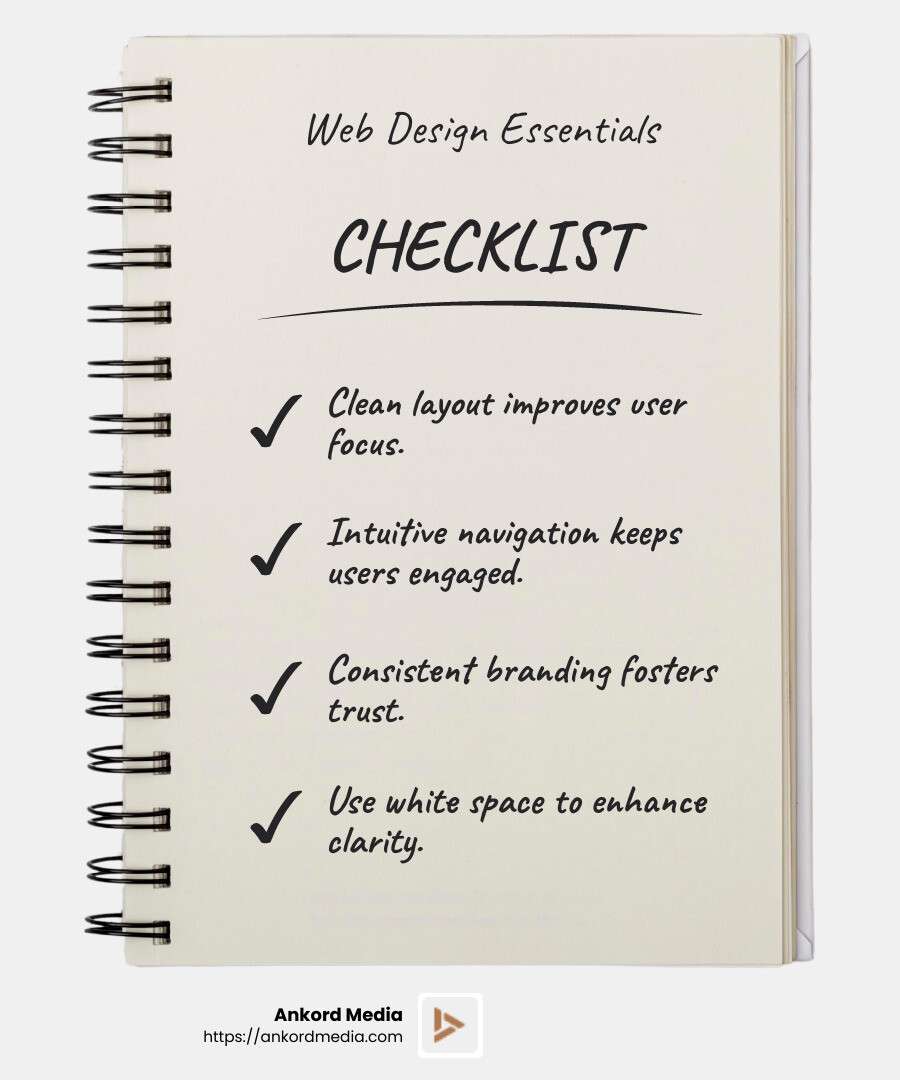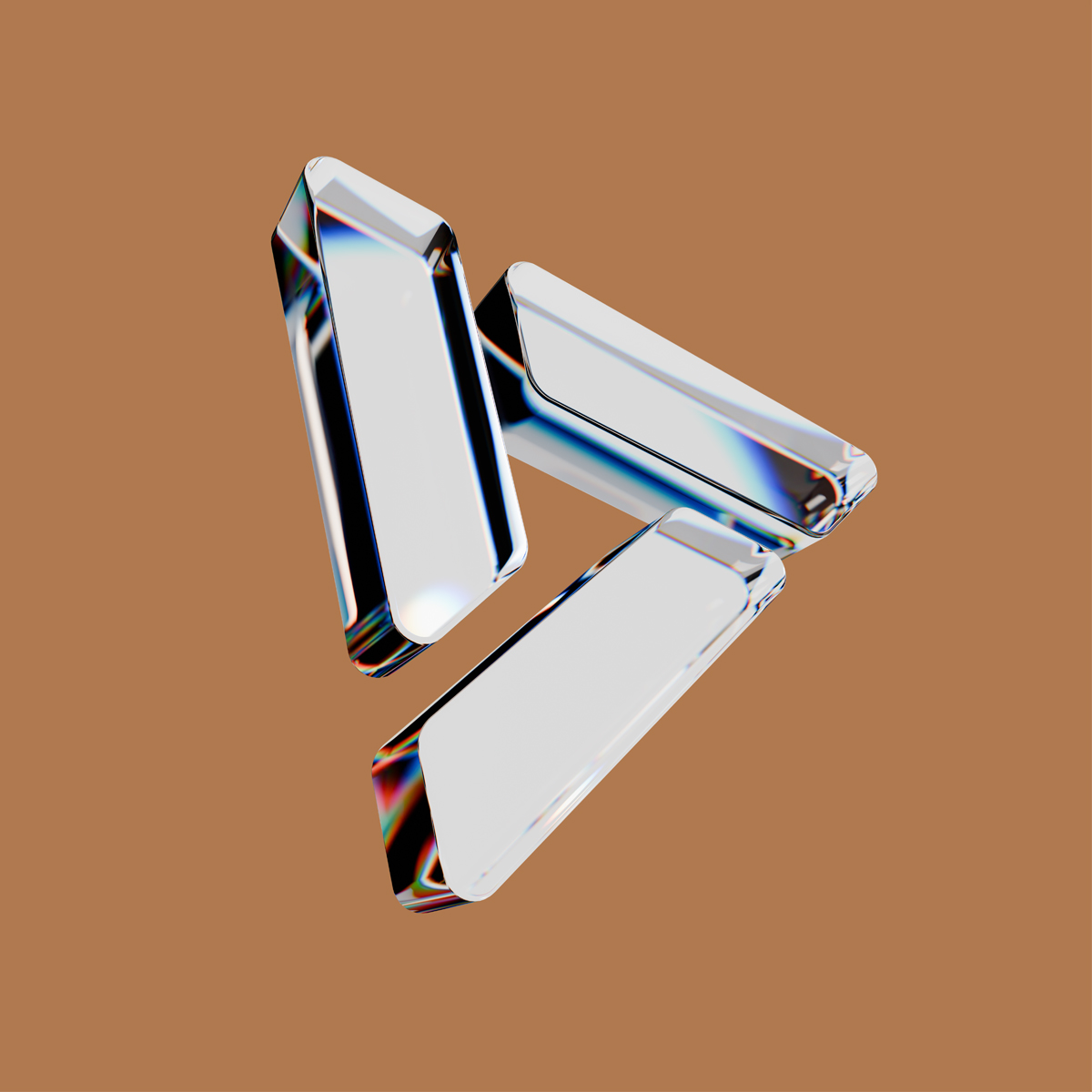
Web design for startups plays a pivotal role in the digital age. A thoughtfully designed website serves as more than just an online presence—it acts as a storyteller, a brand ambassador, and a catalyst for growth. Startups need to focus on several essential elements to thrive in competitive markets:
- Clear Brand Identity: Your website should highlight what makes your brand distinctive and memorable.
- Compelling Storytelling: Engage your audience with stories that resonate emotionally.
- Strategic Goals Alignment: Make sure your website's design aligns with your long-term business goals.
I’m Milan Kordestani, a Gen Z entrepreneur and founder of Ankord Media. My enthusiasm for web design for startups is driven by years of experience in crafting brand identities and creating unique digital experiences for emerging companies. This expertise shapes our approach to enhancing your startup through impactful web design.

Essential Elements of Web Design for Startups
When it comes to web design for startups, simplicity and clarity are your best friends. Let's explore the essential elements that can make your startup's website a powerful tool for growth.
Clean Layout
A clean layout isn't just about aesthetics—it's about functionality. By using plenty of white space, you can make your content more digestible and guide your visitors' attention to the most important parts of your page. This minimalist approach, as seen in successful designs like Agritech's, separates elements nicely and gives the page a balanced feel.

White space doesn't have to be white; it can be any color that complements your brand. This technique helps avoid overwhelming visitors with too much information at once, ensuring they have a pleasant browsing experience.
Easy Navigation
Navigation should be intuitive. Users should find what they need without hassle. Implementing filters, tags, and a straightforward menu can make all the difference. For instance, filters can allow users to sort products by price, category, or popularity, streamlining their search process.
Consider grouping related items together and using clear, descriptive labels. A well-organized menu not only makes navigation easier but also keeps visitors engaged longer. The easier it is to steer, the more likely visitors are to stay and explore.
Brand Attributes
Your website is an extension of your brand. It should reflect your company's identity through consistent use of colors, fonts, and imagery. Consistency helps users remember your brand and fosters trust.
For example, if your brand is all about innovation, like Musai's AI music generation services, use bold headlines and cutting-edge design elements to convey that. Incorporate 3D elements or interactive features to grab attention, but be mindful of loading speeds.

Your brand attributes should be evident in every aspect of your website. From the color palette to the typography, everything should align with your brand's vibe, helping to create a cohesive experience that resonates with your audience.
In summary, a clean layout, easy navigation, and alignment with your brand attributes are essential for a successful startup website. These elements not only improve user experience but also strengthen your brand's presence in the digital world.
Next, we'll explore key considerations for web design, including visual design tools and pre-built components.
Web Design for Startups: Key Considerations
When diving into web design for startups, there are a few key considerations that can help your site not only look good but also function effectively. Let's explore these important aspects.
Visual Design Tools
Using the right visual design tools can make a world of difference. These tools help you create a visually appealing website without needing to be a design expert. Platforms that offer user-friendly interfaces with drag-and-drop features can make it easy for anyone to build a site.
Visual design tools allow you to experiment with different styles, colors, and layouts to see what best represents your brand. They can also save you a lot of time and effort, especially if you're new to web design.
Pre-Built Components
Pre-built components are a game-changer for startups. They provide ready-made elements like buttons, forms, and navigation bars that you can easily customize to fit your brand. This not only speeds up the design process but also ensures consistency across your site.
Using pre-built components means you don't have to start from scratch. It allows you to focus on the more critical aspects of your website, such as content and user experience.
Cohesive Experience
A cohesive experience is crucial for keeping visitors engaged. Your website should feel like a seamless extension of your brand, with every element working together to tell your story.
To achieve this, maintain consistency in your design elements, such as fonts, colors, and imagery. This consistency helps create a unified look that improves user experience and makes your brand memorable.
A cohesive experience isn't just about visuals. It's also about how your website functions. Ensure that navigation is intuitive and that users can find what they need without any hassle. This will keep them on your site longer and increase the chances of conversion.
By focusing on visual design tools, pre-built components, and creating a cohesive experience, you'll be well on your way to building a startup website that not only looks great but also serves your business goals effectively.
Cost Considerations for Startup Web Design
Creating a website for your startup can be both exciting and daunting, especially when it comes to budgeting. Let's break down the costs involved to help you plan effectively.
Beginner Pricing
For startups on a tight budget, hiring a beginner web designer can be a cost-effective option. Beginner pricing typically ranges from $500 to $2,000, depending on the complexity of the site and the designer's experience. While beginners may charge less, they often bring fresh ideas and enthusiasm to the table. However, it's important to ensure they understand your vision and can deliver a professional-looking site that meets your needs.
Development Costs
Development costs can vary widely based on the scope of your project. A basic marketing site with a few pages might cost between $1,000 and $5,000. If you need custom features or complex functionality, the price can rise significantly. Platforms like WordPress and Wix offer affordable options for simple sites, but remember, they might have limitations as your business grows. For more robust and secure platforms, like DNN, initial costs could be higher, but they offer scalability and security benefits.
Startup Costs
In addition to design and development, consider other startup costs related to your website. These can include:
- Domain name registration: Typically $10 to $50 per year.
- Web hosting: Prices range from $5 to $100 per month, depending on the provider and the level of service.
- Content creation: High-quality content is crucial for engaging users. Costs can vary based on whether you create content in-house or hire professionals.
- Maintenance and updates: Regular maintenance ensures your site runs smoothly and stays secure. This can be an ongoing monthly expense.
By understanding these cost considerations, you can budget effectively and make informed decisions about your startup's web design. Next, we'll explore the tools and platforms that can help you build a cost-effective and efficient website.
Choosing the Right Tools and Platforms
Selecting the right tools and platforms is crucial when building a website for your startup. The right choice can save you time, money, and headaches down the road. Let's explore some budget-friendly options that don't require coding expertise.
Website Builders for Startups
Website builders are a popular choice for startups because they offer easy-to-use interfaces and pre-built templates. You can create a professional-looking site without needing to write a single line of code. Platforms like Wix and Squarespace are user-friendly and enable you to drag-and-drop elements to design your site. These platforms are suitable for simple marketing sites, allowing you to get online quickly and affordably.
No Coding Required
One of the biggest advantages of using website builders is that they require no coding. This means you can focus on your business instead of getting bogged down with technical details. With intuitive design tools and pre-built components, you can create a cohesive experience that aligns with your brand. This ease of use empowers you to make updates and changes as your business evolves, without needing to hire a developer.
Budget-Friendly Options
For startups, sticking to a budget is essential. Website builders often offer pricing plans that are flexible and affordable. Many come with a free trial or a basic plan that allows you to test the waters without a significant financial commitment. As your business grows, you can upgrade to plans with more features, such as e-commerce capabilities or advanced analytics. This scalability ensures that your website can grow alongside your startup.
By choosing the right tools and platforms, you can create a website that meets your startup's needs without breaking the bank. In the next section, we'll address some frequently asked questions about web design for startups to help you make more informed decisions.
Frequently Asked Questions about Web Design for Startups
How much should a beginner charge for web design?
When starting out, pricing can be tricky. Beginners often charge anywhere from $500 to $2,500 for a basic website. This range depends on the complexity of the project and the client's needs.
Freelancers benefit from flexibility in pricing, allowing them to adjust based on the project scope and client budget. It's important to factor in the time and resources you will invest in the project.
How should a startup website look like?
A startup website should focus on a clean layout and easy navigation. These elements ensure that visitors can find what they need quickly and without frustration.
According to Ankord Media, a well-designed website should tell your story and showcase your vision. Use a strong, clear hero message to grab attention and guide visitors with a simple call-to-action.
Use white space effectively to make your content stand out and avoid overwhelming your audience.
Is Webflow good for startups?
Webflow is an excellent choice for startups seeking advanced visual design tools without the need to write code. It allows you to create a professional, custom site quickly, saving you time and effort.
Webflow's intuitive interface and pre-built components enable you to design a site that aligns with your brand's style. This platform is particularly useful for startups that want a unique look and feel without hiring a full-time developer.
With Webflow, you can focus on building your business while ensuring your website remains modern and functional.
By understanding these key aspects of web design for startups, you can make informed decisions that align with your business goals and budget.
Conclusion
In web design for startups, creating authentic connections and delivering impactful storytelling are crucial elements that can set your brand apart. At Ankord Media, we pride ourselves on partnering with visionary clients to transform bold ideas into success. Our approach focuses on crafting digital experiences that resonate with your audience and amplify your brand's story.
Authentic connections are at the heart of what we do. We believe that a website should be more than just visually appealing; it should foster genuine engagement with your visitors. This means designing with user experience in mind, ensuring that every interaction on your site feels natural and meaningful.
Impactful storytelling is another cornerstone of our design philosophy. Your website is a platform to share your brand's narrative, showcase your vision, and highlight your unique value proposition. By weaving compelling stories into your digital presence, you can create a lasting impression that resonates with your audience.
To learn more about how we can help your startup achieve its web design goals, visit our services page. Together, we can craft a website that not only meets your needs but exceeds your expectations.


